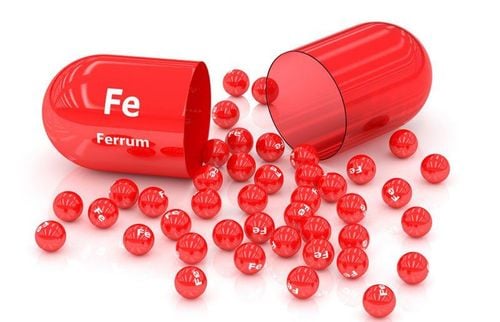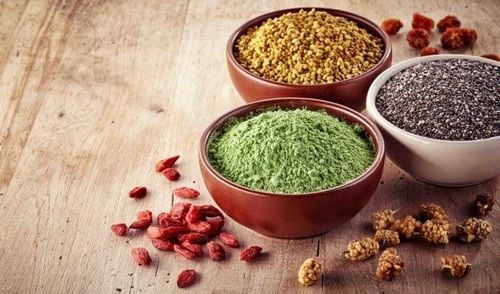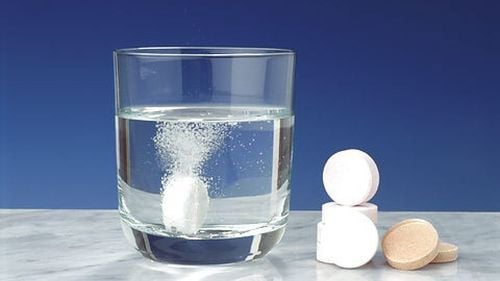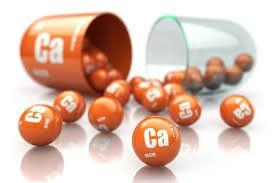This is an automatically translated article.
Children thrive because many nutritional compounds work together to promote growth and development. Although no single nutrient or group of nutrients is important for a child's health, there are five nutrients that children need to be supplemented with: calcium, protein, fiber, antioxidants... should be taken care of and discussed with a pediatrician
1. Calcium a must-have nutrient for bone health
Calcium, the most abundant mineral in the body, maximizes bone growth and strengthens the skeleton during childhood and later. Small amounts help children get enough nutrients while creating blood calcium levels needed for normal heart rhythm, blood clotting and muscle function. The body draws the calcium it needs from the bones to maintain blood levels, which is part of the reason why children need to get enough calcium each day. Many children do not get enough of the nutritional needs of this nutrient compound.
Especially, during adolescence when the body forms about half of the bone mass it used to have. Chronic calcium deficiency during these years is one of the risk factors for developing osteoporosis decades later. Children's daily calcium requirements depend on age:
Children aged 1 - 3 years need 500 milligrams. Children 4-8 years old need 800 milligrams. Children ages 9-18 need 1,300 milligrams. Part of the solution to low calcium is to provide children and teenagers with calcium-rich drinks and snacks rather than soft drinks, chips and candy. 227 milliliters of white or flavored milk, 227 milliliters of yogurt, and 0.9 kilograms of hard cheese, each containing about 300 milligrams of calcium.
While dairy foods are excellent sources of calcium, calcium is also abundant in plant-based products such as fortified orange juice and soy beverages, tofu prepared with calcium sulfate and some cereals have breakfast. In addition, Vitamin D is very important for calcium absorption to help form and maintain strong bones. The American Academy of Pediatrics (AAP) recommends that all breastfed and partially breastfed infants get 400 IU of vitamin D from liquid supplements each day. For children over 1 year of age, 32 ounces of fortified milk or fortified sources of vitamin D is recommended per day. For these children, the AAP recommends 400 IU/day. D.

Canxi cần thiết cho sự phát triển của xương và củng cố khung xương trong suốt thời thơ ấu và sau này
2. Protein needed for growth
Protein is part of every body tissue, but its amino acids are what the body really needs. Amino acids are the raw materials for building new cells and tissues, as well as the compounds that direct the body's processes, including those involving enzymes and hormones.
Protein in food comes from animals and plants. But there is a difference, animal foods, especially eggs, provide essential amino acids (EAAs) that your child's body cannot make. No plant food provides all the amino acids, so vegans (who don't eat animal foods) must eat a variety of protein-packed plant foods to get the EAAs they need. Vegetarians who include dairy foods and eggs usually meet their EAA needs as long as they eat enough.
To get children to eat enough children's daily protein needs based on age:
Children aged 1 - 3 years need about 13 grams. Children 4 - 8 years old need 19 grams. Children from 9 to 13 years old need 34 grams. The needs of young people aged 14 to 18 years old depend on gender - 46 grams for women and 52 grams for men. Protein is not an issue for most children, even those who don't eat meat or don't eat it often. For example, 457 milliliters of milk or yogurt or 0.9 kg of meat, chicken or seafood and one egg meet the daily protein requirement of a 3-year-old.
3. Complex but simple fiber
Children need fiber for good nutrition and healthy growth. But fiber is an oddity among complex carbohydrates minus calories. Babies can't digest the fiber in foods to get the energy it provides.
Children need fiber for the same reasons as adults. Fiber helps prevent type 2 diabetes and high blood cholesterol levels in adults and possibly children. The proven benefits of fiber for children include fighting constipation and promoting satiety. High-fiber foods, including whole grains, legumes, fruits, and vegetables, help keep kids full longer, a boon in the fight against bloating. And foods high in fiber are rich in vitamins and minerals.
4. Disease-fighting antioxidants
Antioxidant nutrients, including vitamins C, E, beta-carotene and the mineral selenium, receive a lot of attention for their ability to fight chronic diseases in adults, including cancer and heart disease.
Antioxidants work against the effects of free radicals. Free radicals are a byproduct of normal metabolism that also form when you're exposed to air pollution, cigarette smoke, and strong sunlight. When free radicals build up, they can damage DNA, the genetic blueprint for cell reproduction, as well as other cell parts.
Although there is little research to prove the effects of antioxidants on children's health, it is advisable to give foods rich in antioxidants, such as whole grains and nuts. brightly colored fruits and vegetables, including blueberries and other berries, broccoli, spinach, tomatoes, sweet potatoes, cantaloupe, cherries and carrots are among the products Provides the most antioxidants.
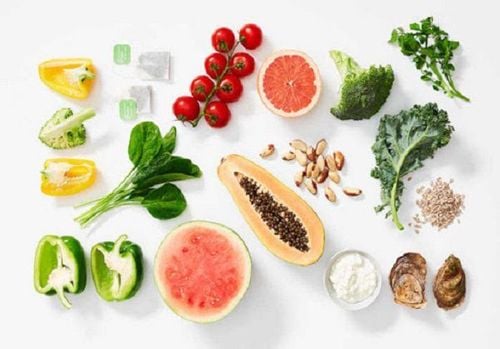
Chất chống oxy hóa có nhiều ngũ cốc nguyên hạt và các loại trái cây và rau quả có màu sắc rực rỡ
5. Iron is an important nutrient
Red blood cells need iron to carry oxygen to every cell in the body. Iron also plays a role in brain development and function.
Iron is so important for brain development that the negative effects of daily iron deficiency on cognition may be irreversible, even if the deficiency is small.
According to the American Academy of Pediatrics, iron deficiency is the most common nutritional deficiency in the United States, affecting mainly young children and women of childbearing age. Young children are at risk because they grow so quickly. Iron deficiency can lead to anemia.
Both animal and plant foods provide iron. Animal products, such as meat, dark poultry and seafood, provide heme iron, the form of iron that the body absorbs best. Plant foods, including spinach and legumes, provide nonheme iron. Nonheme iron also belongs to the category of iron added to fortified breads, cereals, pasta, rice and cereals.
Steady fortified cereal sources can provide enough iron, even for people who don't eat meat and who should take a daily multivitamin with iron to be safe.
For children to be healthy and develop well, it is necessary to have a nutritious diet in terms of quantity and quality balance. If children are not provided with adequate and balanced nutrients, it will lead to diseases of excess or lack of nutrients, which adversely affect the comprehensive development of children in terms of physical, mental and motor skills.
Children who do not eat properly are at risk of micro-mineral deficiency causing anorexia, growth retardation, malabsorption,... If they notice the above signs, parents should supplement their children with products. The supplement contains lysine, essential micro-minerals and vitamins such as zinc, chromium, selenium, and B vitamins to help fully meet the nutritional needs of children. At the same time, these essential vitamins also support digestion, enhance nutrient absorption, help improve anorexia, and help children eat well.
Parents can learn more:
Signs of zinc deficiency in children
Micronutrient deficiency and failure to gain weight in children
Please regularly visit Vinmec.com website and update useful information to take care of your child. Take care of the baby and the whole family.
Reference source: webmd.com





